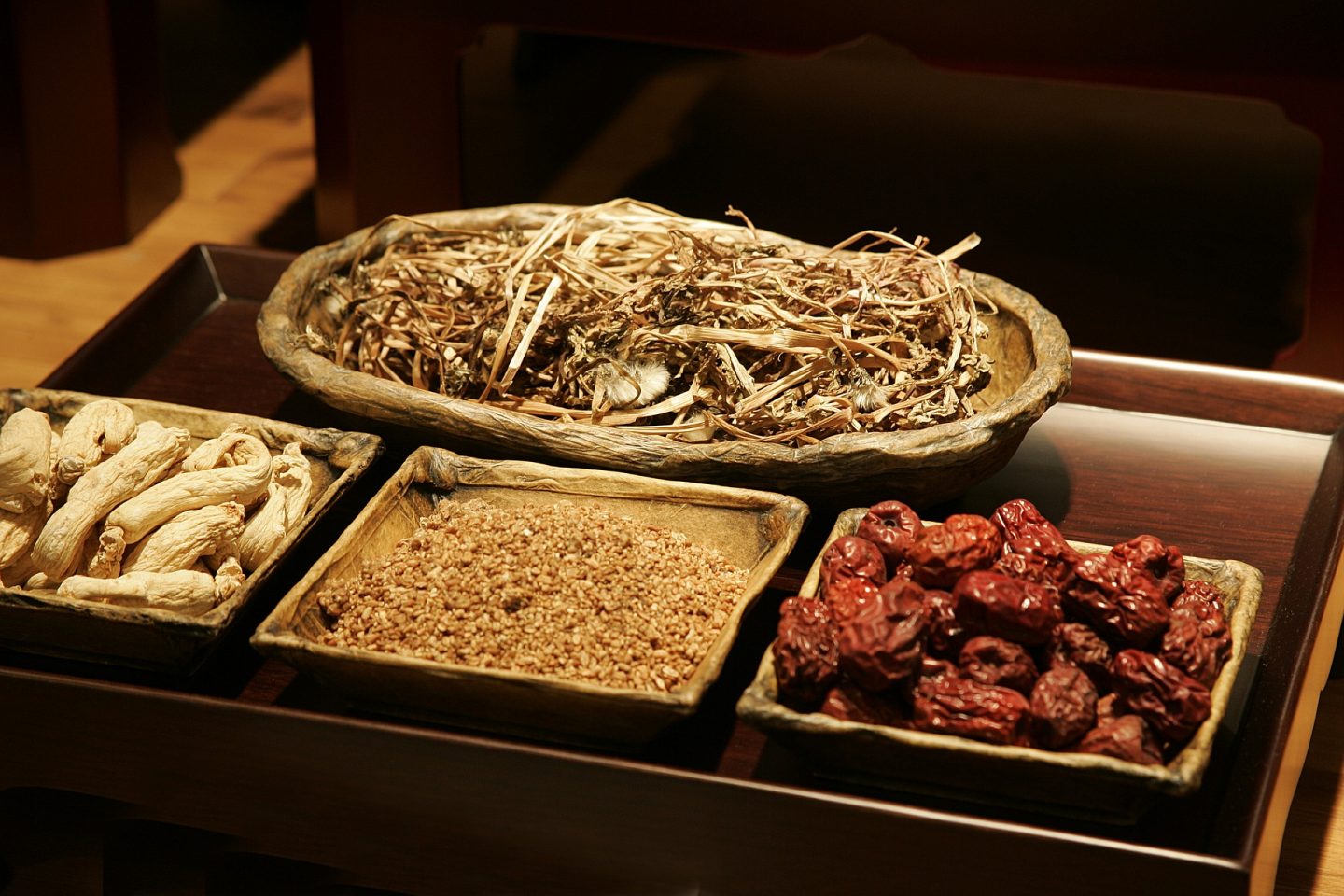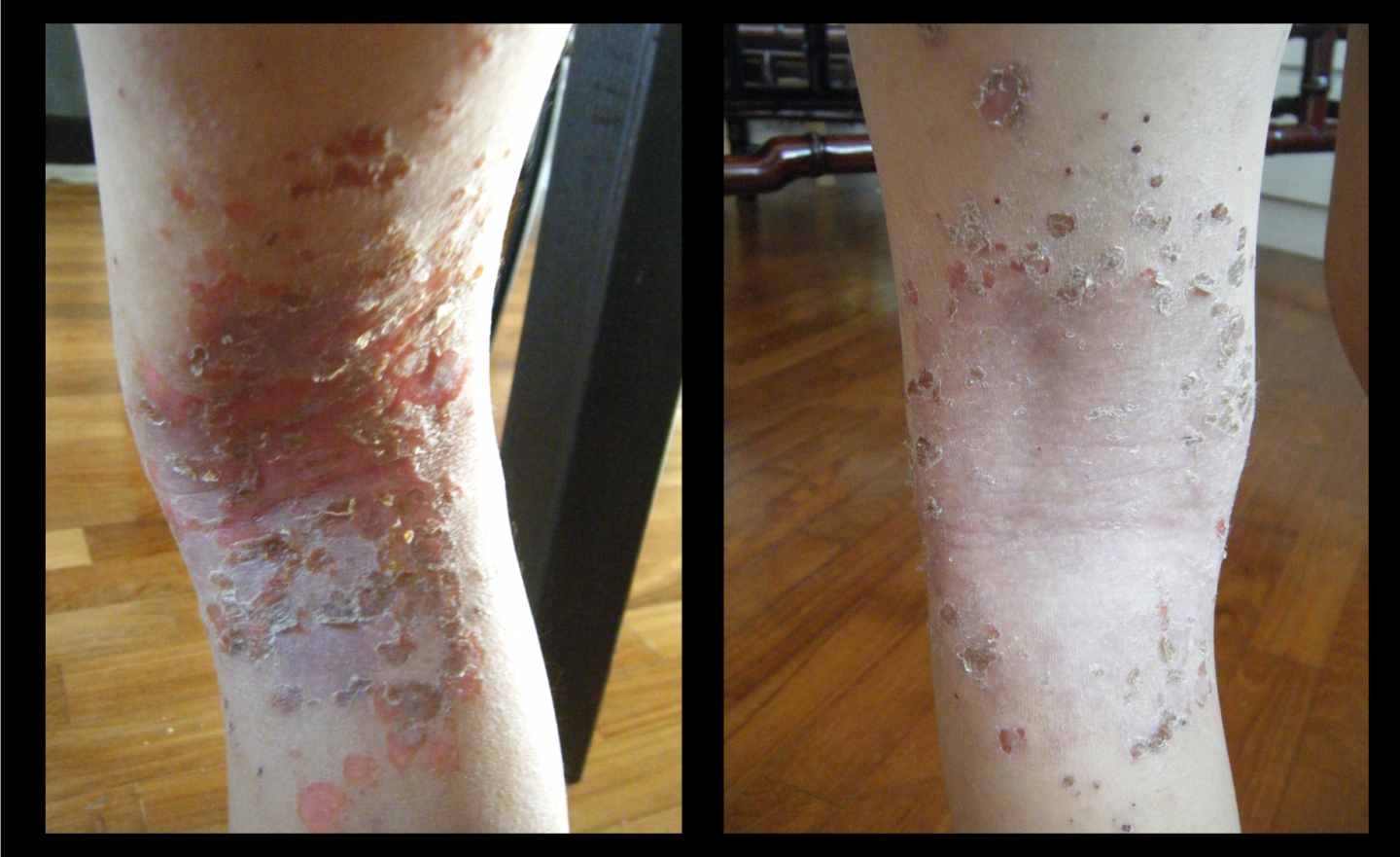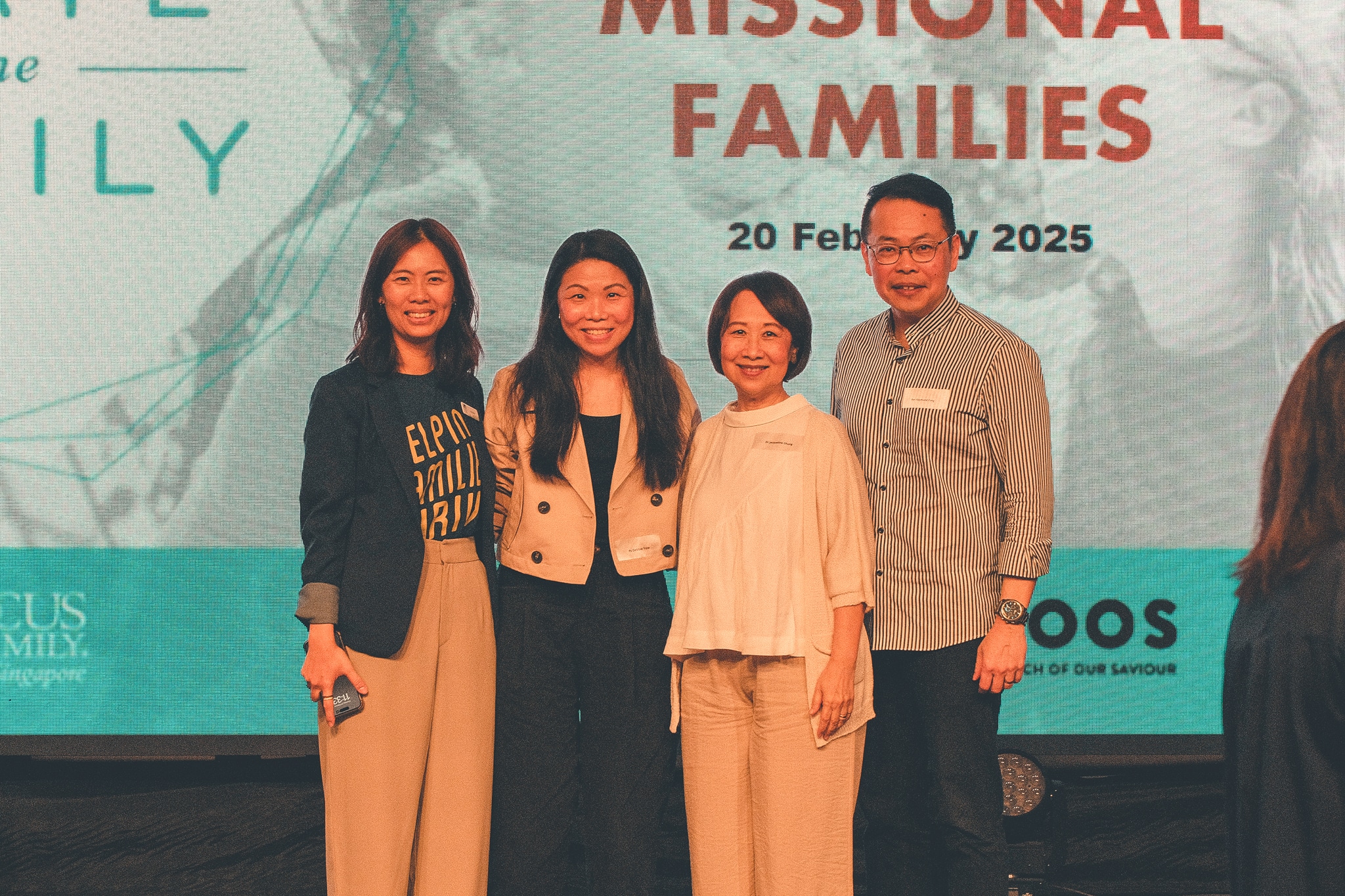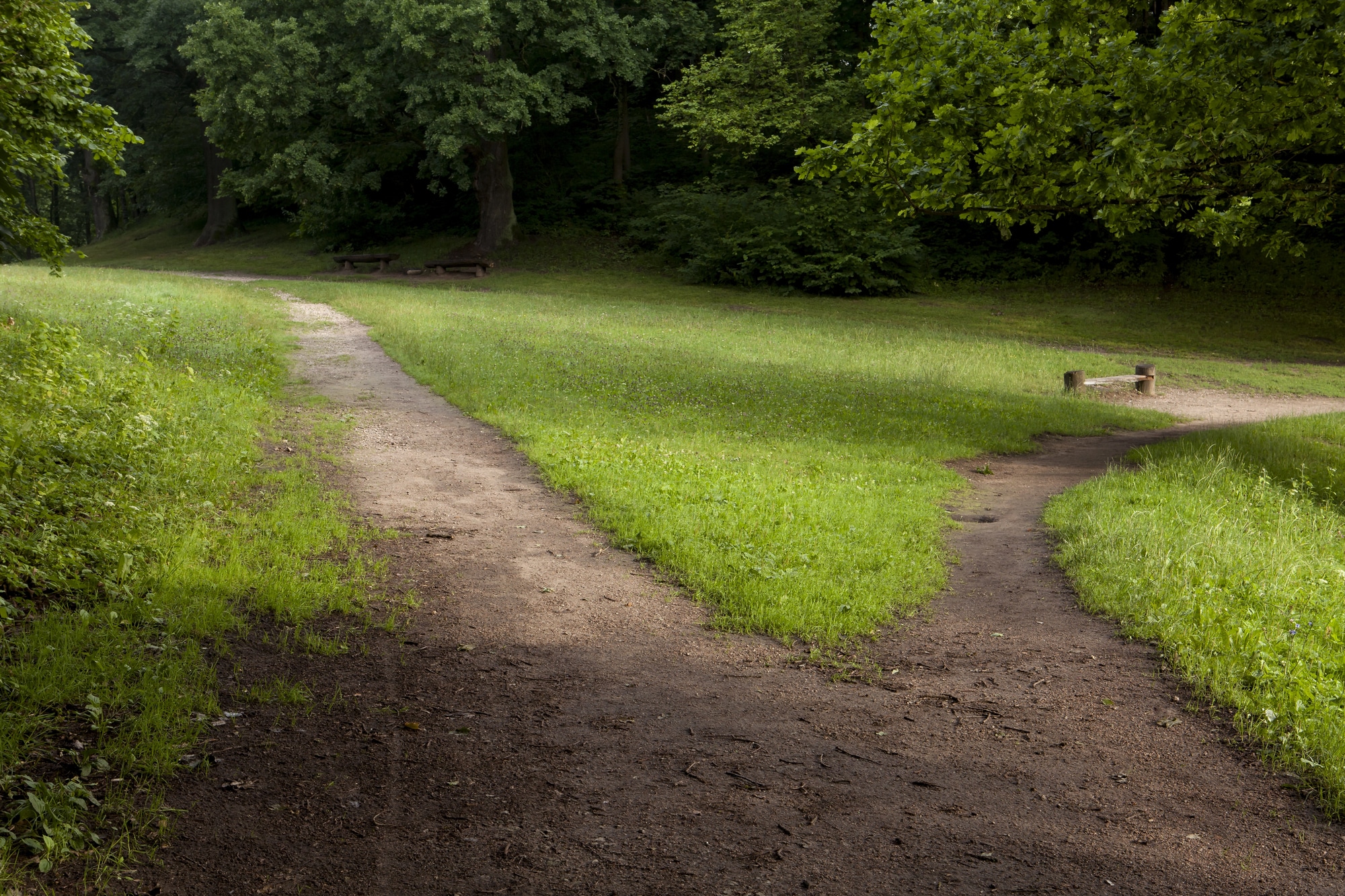
Dermatitis is a difficult condition to live with. More commonly known as eczema, it causes dry, itchy skin in its sufferers, the majority of whom are children.
At the risk of over-simplifying this condition, imagine having dry, cracked skin with an itch that is never ever satisfied. Scratching only aggravates it and eventually causes painful, raw skin. On bad days, the patches are itchy and painful. On good ones, the condition varies from dry and patchy, to merely “tingly”.
Dr Lai Pak Wah, Vice Principal of the Bible Graduate School of Theology (BGST), is all too familiar with it. His seven-year-old son suffered from severe eczema.

The before and after photos of the eczema patches on Dr Lai’s son
Western medicine deems eczema to be incurable; it can only be managed, but often with little effect. With a friend’s recommendation, Lai took his son to see a Chinese medicine practitioner.
The physician treated his son by making a spinal adjustment and recommending some lifestyle changes like his diet and even his sitting posture, based on TCM principles. Within one month of that visit, his son’s condition improved significantly.
Today, his son is 13 years old and leads a normal life like other teenagers his age.
The search for answers
Traditional Chinese medicine or TCM has been gaining acceptance worldwide. However, for many in the body of Christ, Chinese medicine remains a grey area where people hold differing views.
Some are cautious of the supposed links between TCM and the occult, preferring to avoid it altogether. And others view it tentatively, uncertain in their engagement with it.
For Lai, the effectiveness of TCM was undeniable, its impact significant.
With a PhD in Theology and Church History, Lai saw the dissonance between the general perception of TCM as a stumbling block to Christianity and the benefits that it brought. He decided to study further, “because God is the Creator of the world, that means you can explore any area of life safely”.
Lai says he was inspired and strongly influenced by Francis Schaeffer, the famous philosopher-theologian, who said:
“The ancients were afraid that if they went to the end of the earth they would fall off … But once we understand that Christianity is true … we can pursue any question and can be sure that we will not fall off the end of the earth.”
After much research, the study into the topic of TCM bore fruit in the form of a book, The Dao of Healing: Christian Perspectives on Chinese Medicine.
The aims of the book are expressed clearly in its introduction:
A clash of cultures – or not
“It is a sober reminder for Christians to take our engagement with Chinese medicine and culture carefully, lest we create an unnecessary stumbling block to the Gospel, and the Christian faith is deemed by the unreached as nothing but a ‘Western religion’. Apologetics is therefore the first concern for this book.”
There is a difference between secular Chinese medicine and spiritual healing.
Jesus first mentions the idea of a stumbling block in Mark 9:42. Paul also speaks firmly of not stumbling fellow believers, but instead, exhorts believers to “make every effort to do what leads to peace and mutual edification” (Romans 14:19).
According to Lai, this is important, not just to the countless number of bicultural Singaporeans who have grown up with TCM-based remedies, such as po chai pills and various classifications of “heaty” or “cooling” foods, but also to many who desire to reach out to their parents who are firmly rooted in Chinese culture.
In faith and in deed
Removing a stumbling block to the Gospel is one thing, proclaiming freedom to those under the bondage of physical ailments is another area Lai expounds on:
“The second is plain. If Chinese medicine, according to its practitioners and users, has garnered a wealth of wisdom that can prove helpful for the sick, establishing the legitimacy of this tradition then becomes a matter of life and death for many people.”
In China, the knowledge and practice of Chinese medicine is widely used and is especially practiced in rural and poor areas where Western medicine is costly and inaccessible. Herbal remedies, acupuncture and other methods are low-cost and meet the needs of the people.
In Singapore, it was only in the year 2000 that TCM practitioners were first able to register and to be recognised by the Ministry of Health, even though they have been entrenched in the local Chinese culture. This may be a reason why TCM has been viewed with general suspicion.
Since then, some churches have used TCM as a form of outreach. One example is Bethel Community Services, which runs twice-weekly TCM clinics for a nominal fee. Reverend Moses Pi who runs the clinic is a certified Chinese medicine doctor, zhong yi, and he can testify to the relief that TCM has brought to many patients, and the doors that it has opened for the Gospel.
Properly understood, Lai believes that TCM is not incompatible with the Christian faith. However, he clarifies that there is a difference between secular Chinese medicine and spiritual healing like drinking ash water, which is practised in some faiths.
In fact, “TCM is a secular practice and the underlying philosophy is merely a different way of understanding the world”.
Chinese medicine can be seen as an instrument of God’s healing for man rather than an obstacle to faith – these have been clearly defined through the Word and in church history, Lai elaborates in his book.
Starting dialogues that inform
The teacher Qoheleth says: “There is nothing new under the sun.” (Ecclesiastes 1:9) Applying that principle, Lai explains that “church history becomes an additional piece of this puzzle.
“You can take examples from the past and look at the present.”
To those early church fathers, Greek medicine was a common good that was used to minister to people.
And this is possibly the most reassuring aspect that Lai seeks to make known about TCM:
“Throughout the history of the Church, Christians have found it beneficial to engage with non-Christian sources of wisdom, both as a means of articulating and contextualising their faith.”
In this case, the very first hospital for the poor was set up by Christian monks who practised Hippocratic medicine, based on Greek philosophy. Prior use of medicine was exclusively limited to gladiators, soldiers and the rich; no one did anything for the poor. To those early church fathers, it wasn’t just Greek medicine, it was a common good that was used to minister to people. These medical practices have also taken root in modern medicine.
Finding the harmony of the Gospel of Christ
John Piper, in his book Think: The Life of the Mind and the Love of God, says this:
“The task of all Christian scholarship — not just biblical studies — is to study reality as a manifestation of God’s glory, to speak and write about it with accuracy, and to savour the beauty of God in it, and to make it serve the good of man.”
Lai says that the ultimate aim of The Dao of Healing: Christian Perspectives on Chinese Medicine is to foster a dialogue – such that the Gospel is demonstrated in terms which relate to the Chinese culture.
The Dao of Healing: Christian Perspectives on Chinese Medicine, published by Graceworks can be purchased here.
We are an independent, non-profit organisation that relies on the generosity of our readers, such as yourself, to continue serving the kingdom. Every dollar donated goes directly back into our editorial coverage.
Would you consider partnering with us in our kingdom work by supporting us financially, either as a one-off donation, or a recurring pledge?
Support Salt&Light


